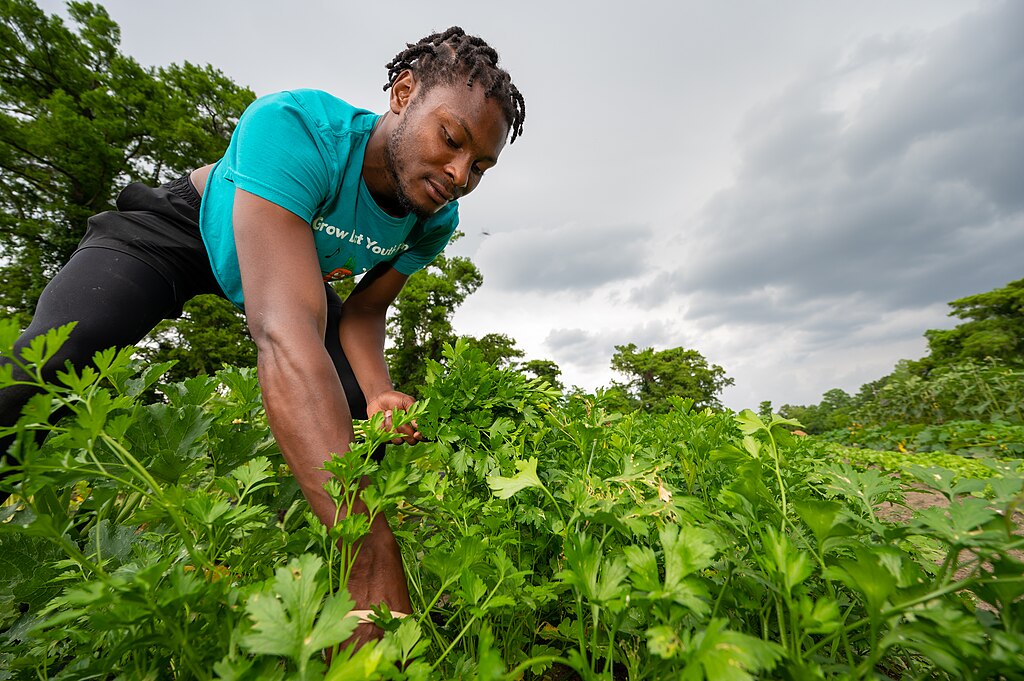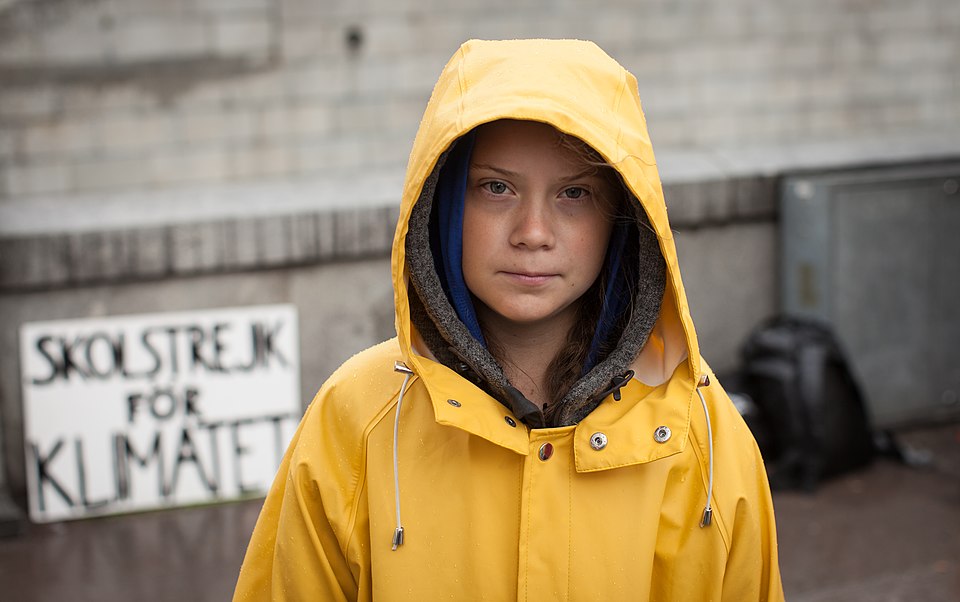
Signs of Promise for a Sustainable Future, Part 2: Green Innovation and Shifting Perspectives
(USDA via Wikimedia Commons)
Green innovation tackles energy storage and sustainability challenges, while youth leaders inspire global action. Shifting perspectives emphasize moral, economic, and political urgency. Progress is evident, but unified efforts remain essential for a sustainable future.
Green Innovation
Across the globe, numerous entrepreneurial start-ups are working on potential “moon-shot” solutions, including “green” cement, fusion energy, carbon-capture technologies, and geoengineering. These will not help in time to help reach emissions goals in 2030 or even 2050, but there are other technological developments that will help. One such development is in the area of batteries and energy storage.
The main problem that’s holding back sustainable energy sources from replacing fossil fuels completely is “intermittency.” Intermittency means that solar panels and wind turbines do not produce power when the sun isn’t shining and the wind isn’t blowing. The solution is to store energy when power is available for use when it is not. At present the main way energy is stored is to use excess power when it is available to pump water to reservoirs that supply hydroelectricity. This method is only useful near major rivers that already are sources of hydroelectric power.
Most other green energy sources rely on batteries for storage, which so far have been limited to providing full power to their electric grids for just a few hours. Dozens of advanced storage technologies are under development that are lighter weight, longer lasting, less expensive, less harmful to the environment, that store more energy, and charge much faster than lithium-ion batteries. In the near future some of these new technologies are certain to revolutionize grid storage, and electric vehicle charging as well.

Youth Leadership
In 2007, nine-year-old German schoolboy Felix Finkbeiner wrote a school report inspired by what he had read about the Green Belt Movement in Africa. Felix’s idea that school children of the world could plant one million trees in their countries has grown into the Trillion Tree Campaign, which by 2021 has planted 14 billion trees worldwide. In 2012 Dutch high school student Boyan Slat gave a TEDx talk suggesting a method to clean plastic pollution from the oceans. This led to founding the non-profit Ocean Cleanup and inspired other groups that together have prevented millions of tons of plastic from entering the seas. There are many other stories of individuals young and old who are acting to protect the places they love.
A 2021 poll of young people globally found that 84% of people aged 16 to 25 are at least moderately worried about the future climate, with 59% extremely worried. In March of 2019, inspired by Gen-Z Nobel-nominated Swedish activist Greta Thunberg, some 1.6 million students in 300 cities around the world walked out of their classrooms to march for climate action. Said Thunberg, “Avoiding climate breakdown will require cathedral thinking. We must lay the foundation while we may not know exactly how to build the ceiling.” Grassroots groups such as the Citizens’ Climate Lobby have been effective at generating bipartisan support, particularly of Republicans whose districts are being harmed by climate change.

Shifting Perspectives
The unprecedented scope, pace, and complexity of the climate challenge necessitate a similarly exceptional level of political will and decisive public policy to enhance these efforts, and there are signs of a shift in this direction. Economists like Kate Raworth are promoting new regenerative economic models that recognize humans as adaptable beings within a world of finite resources.
In 2015, Pope Francis issued a papal encyclical declaring that the science on climate change is clear, linking it to broader global injustice, and calling on the world’s 1.2 billion Catholics to join the fight to stabilize temperatures as a moral imperative. In a video message he says “If we took the planet’s temperature, it will tell us that the Earth has a fever. And it is sick,” even going as far to make that month’s prayer intentions “for the cry of the Earth.”
Perhaps our growing understanding of morality as a complex interplay of biological and cultural factors that shape ethical beliefs may help us recognize harmful denialism and fulfill our responsibility to protect the planet. As psychologist Paul Bloom writes, though we come into the world with the genetic foundations of morality, an ability to distinguish between kindness and cruelty, a sense of fairness and justice, and innate empathy and compassion, “our capacities as babies are sharply limited. It is the insights of rational individuals that make a truly universal and unselfish morality something that our species can aspire to.”
Back from the Ledge
Seven years after writing The Uninhabitable Earth in which he outlined the very bleak future that seemed most likely for our planet, David Wallace-Wells provided a much more hopeful update:
Thanks to astonishing declines in the price of renewables, a truly global political mobilization, a clearer picture of the energy future and serious policy focus from world leaders, we have cut expected warming almost in half in just five years. … worst-case temperature scenarios that recently seemed plausible now look much less so, which is inarguably good news and, in a time of climate panic and despair, a truly underappreciated sign of genuine and world-shaping progress.
To be clear, the situation has changed from the possible end of civilization to something less extreme but still awful. The “almost half” that Wallace-Wells refers to is a warming of 2.6˚C instead of 5˚C, still far beyond the tipping points in the climate system that may accelerate warming into a cascade of disasters. Unfortunately, the main driver of a rational sense of urgency about global warming may have to be the increasing occurrence of climate-related disasters.
Hopefully, we do not have to wait until the pain of the impacts outweighs the pain of lifestyle changes for all these efforts to coalesce into meaningful action—which may well be too late. But as Al Gore wrote in Our Choice, “We should feel a sense of joy that those of us alive today have … the chance to undertake an historic mission worthy of our best efforts.”

